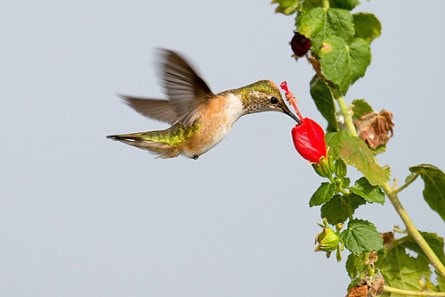
I’ve been seeing a lot of FB posts about all the hummingbirds in the area and others asking lots of question about this beautiful and fascinating bird. I have had 3-4 here at my place in Gonzales since last spring. Then a few more showed up several weeks ago and now there must be a dozen or more flying here and there. They are such fascinating birds to watch. I would have liked to get a photo of them, but my cell phone with camera died last week and it has taken a while to get it replaced!!
Here are a few facts about hummers that I would like to share with you:
The late fall and winter would be a great time to plan your hummingbird garden for next year.
Here are a few facts about hummers that I would like to share with you:
- Leave your hummingbird feeders up as long as hummingbirds are visiting them and then a few weeks more.
- Put them back out in the spring.
- They know when to migrate because of their internal biological calendar, or circannual rhythms. Their bodies begin to store up fat that will fuel the journey south. When the urge to migrate begins, these biological rhythms take over. They are in tune with the changing day lengths.
- They leave their summer homes while their food source is still plentiful and head south, stopping along the way to feed and store up food for the long journey.
- Make your own source of nectar by boiling 1 cup of sugar in 4 cups of water to remove impurities. Cool before placing in your feeder. Do not add any red food coloring, honey or other additives to the water.
- Change the sugar syrup every couple of days, to keep the feeder clean and free from mold and fermentation which can be dangerous to the little birds.
- Flowers best adapted for hummingbird pollination are bright red blooms with a tubular shape. Hummingbirds instinctively watch for red things and investigate them. Try growing Turks cap, cypress vine, cardinal vine, flame acanthus, trumpet vine and salvia greggii here in Central Texas.
- Hummingbirds are territorial, meaning they will protect their source of food. Place several feeders in the yard or garden but place them so that they can’t be seen from one another.
- These birds have a highly developed sense of memory and will come back to the same feeder year after year. Likewise, they will look for those same plants year after year. It may take a few years to get established, but don’t give up.
- They also eat insects like gnats, flies, mosquitoes, and spiders that provide the protein these birds need especially during nesting season (year around in warm areas like ours).
- Many hummingbirds use spider web silk to build and anchor their nests. So allow the spiders to accumulate around your landscape.
- Provide woody shrubs near your feeders where they can perch and scope out the situation.
- Provide water for them in the way of misters or puddlers. They love to bathe in the water.
The late fall and winter would be a great time to plan your hummingbird garden for next year.